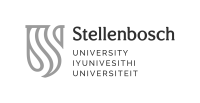S2415 System Level Thinking in Color: from Venetian Glass to the Evolution of Paints, Fabrics, & Fashion
Professors
Schedule
Course description
The vendecolori of Venice made their fortunes through development and trade of vibrant and vivid colorants for paints, glass, and fabrics. Participants in this introductory-level course will explore the chemistry of color from a sustainability standpoint within the context of Venice’s rich history of innovation in macromolecular materials. Venetians have been leaders in the industries of glassmaking and textile dyes. Obviously Venetian glass is in a class by itself, but did you know that Venice was an early hub for imported dyes and the intellectual center for the development of dye recipes for various fabric colors? The hundreds of dyes developed in Venice were then traded by ship throughout Europe for over 200 years. In addition, advances in the chemistry of color in Venice allowed painters such as Giovanni Bellini to develop reputations as masters of color through their vibrant paintings.
The course will incorporate field trips to relevant sites related to the topics we are studying. One of the first trips will be to the island of Murano, the innovative hub of Europe’s glassmaking industry for centuries. To help learners appreciate the rich history of textiles in Venice, we will visit Burano and/or Museo di Palazzo Mocenigo, a local museum of fabrics, costumes, and perfumes. Finally, we will explore Venetian painters’ rich use of color through a visit together to the Galleries of the Academy of Venice, Museo Correr, or a similar location.
Glass, fabrics, paints, and plastics are all macromolecules. We will investigate the similarities and differences in these materials at a molecular level, and please be reassured that no prior experience with chemistry is needed. We will also develop a foundation of understanding of the chemistry of color. Once learners understand the molecular basis of materials and color, the course will endeavor to build student awareness about sustainability concepts and issues within these industries. For example, we will discuss the health aspects and dangers inherent to the textile dying industry. Classes will be discussion based: each class will be either a field trip, discussion of readings, or completion of a series of in-class inquiry-guided, team-based activities. As an illustration, an activity entitled “Polymers, Plastics, and Recycling,” will be used to provide learners with a foundation in the principles of macromolecular structure, green chemistry, sustainability, and systems-level thinking.
After this rich and diverse foundation has been laid, each student team will select a broad topic related to materials science and/or the chemistry of color in Venice to further explore as a final project. Each participant on the team will write a 3-page paper on a unique, narrow aspect of their team’s topic, turning in drafts for peer review, and culminating in a group presentation that incorporates all that the team has learned as a final project in the course.
Learning Outcomes
Detailed learning objectives will be distributed by topic during lecture over the course of the semester, and some of these are highlighted here. For the convenience of students, these are divided into Science, Technology, and Society outcomes, Applications in Venice outcomes, and Foundational Chemistry Concepts and Skills outcomes.
Upon completion of this class, a successful student will be able to:
Science, Technology, and Society
• Explain key concepts in macromolecular materials:
- Draw representative molecular structure of glass, different types of fabrics, paints, and plastics. Identify similarities and differences in macromolecular materials at the molecular level.
- Provide several examples of how modern society makes and colors polymers, uses polymers, and how these materials can be recycled.
- Define the terms relevant to polymerization and plastics, such as monomer, polymer, and chain growth, branching, and crosslinking.
• Develop foundation in chemistry of color:
- Explain the basics of how we see and how we can perceive color.
- Describe the chemical basis of color, including pigment and dye molecules.
- Provide examples of the molecular basis of color in various materials.
• Explore Sustainability Concepts in Material Science:
- Provide a definition of sustainability. Describe some technologies or processes that reduce pollutant emissions in the colorant industries.
- Investigate sustainability issues within the glassmaking, textile dyeing, and painting industries. Discuss health aspects and dangers inherent in these industries and how these are addressed in modern society.
- List at least three challenges to sustainability related to colorants that require chemistry to characterize or address. Provide some examples of how the historical actions of humans in the chemical industries of glassmaking, textiles, paints, and plastics have contributed to environmental degradation.
• Apply Principles of Green Chemistry:
- Use green chemistry principles to understand and evaluate the sustainability of materials and colorants.
- Discuss the importance of green chemistry in the context of the course topics.
• Demonstrate basic understanding of the scientific process:
- Define problems clearly and develop testable hypotheses.
- Analyze data, models, and arguments about chemistry and material science in a global context and synthesize information to draw appropriate conclusions.
- Interpret and explain scientific information given in tables, charts, and graphs.
Applications in Venice
• Understand the Historical Significance of Venetian Vendecolori:
- Explore the historical development and economic importance of the Venetian colorant industry. Examine how the trade of vibrant colorants contributed to Venice's economic prosperity.
• Analyze the Role of Venice in Glassmaking:
- Investigate the historical significance of Murano as the hub of Europe's glassmaking industry.
- List and explain key innovations in Venetian glassmaking and their impact on the industry.
• Explore the Textile Dyeing Heritage of Venice:
- Investigate Venice's role as an early center for imported dyes and the development of dye recipes.
- Visit Burano and/or Museo di Palazzo Mocenigo to appreciate the rich history of textiles in Venice.
• Examine the Chemistry of Color in Venetian Painting:
- Analyze how advances in the chemistry of color influenced the work of Venetian painters such as Giovanni Bellini.
- Explore the vibrant paintings in the Galleries of the Academy of Venice or Museo Correr to understand the use of color in art.
Foundational Course Activities and Professional Skills
• Basic chemistry concepts and skills
- Describe atomic structures using sub-atomic particles, including charges and approximate masses of all species.
- Use the structure of the periodic table to relate position on the table to an element’s behavior and reactivity. Describe the differences between the atomic structures of metals and nonmetals.
- Explain what a mole is to someone who has never had a chemistry class.
- Explain what molar mass is and how to determine the molar mass of an element or compound.
- Convert between grams to moles or the reverse. Convert between moles and number of objects or the reverse.
- Define concentration units used in environmental monitoring: %, ppt, ppm, and ppb. Fluidly convert between various units of measurement and/or concentrations using conversion factors and molar masses and comfortably use metric prefixes. Readily convert between expressing amounts of matter as numbers of particles, moles, and/or grams.
- Explain what is described in each chemical reaction equation in English words. Balance a chemical reaction equation.
- Convert from Lewis structures to bond-line structures and vice versa.
• Communication, problem solving, and critical thinking skills:
- Participate in productive discussions with a diverse team of peers:
- Engage in discussions related to readings, field trips, and in-class activities to explore broad topics in materials science and the chemistry of color in Venice.
- Develop critical thinking skills through inquiry-guided, team-based activities.
- Participate in peer review processes for draft papers to enhance writing and research skills.
- Research and write a 3-page paper on a unique, narrow aspect of the team's chosen topic.
Grading
Points for the homework, class activities, peer feedback, a final individual paper, and a final group project & presentation will be used to calculate your final score as shown:
Homework 75 pts
Class Activities 100 pts
Peer Feedback (on papers & presentations) 50 pts
Final Individual Paper 100 pts
Team Final Project Presentation 75 pts
Total 400 points
Homework
Reading assignments: To solidify your understanding of the material, you should read the assigned passages each week which will be posted to Moodle. There will be a maximum of 30 pages of required reading per week selected from the sources listed below in addition to other scholarly works and current events in the news.
The homework score consists of completion of the required readings and posting to the course message board in response to prompts (50 word min – 100 word maximum) and completing class activity pre-work when it is assigned.
Class Activities
Class meetings will provide an opportunity for you to build your knowledge through guided inquiry activities, discussions, and problem solving in groups. You will be assigned to a team and will work with that team throughout the semester. It is not possible to make up group work that is unexpectedly missed; instead, to reasonably account for minor personal illness or other unforeseen events causing absence, your lowest three class activity scores will be dropped prior to the average calculation for this portion of the grade. In addition, one optional remote assignment will be made available near the end of the term can replace one of the classes if you miss more than three times. The basic expectation is that you will attend every class, arrive on time, and to be an active participant. In the rare event that you arrive so late or leave so early that you do not contribute sufficiently to your group’s effort, the instructor has the right to count the day as an absence; tardiness will be reflected in your participation score.
Individual Research Paper & Team Final Project
More detailed guidelines for the research papers and team final project will be provided during class. The objectives of these assignments are:
1) to encourage you to learn more about the color chemistry related to a specific topic that interests you through research, writing, discussion with peers, and presenting.
2) to allow you to learn more about your group’s topic of interest by reading, responding to, and reviewing your peers’ essays.
3) to allow you to learn more about a wide range of topics by viewing and responding to the presentations of other groups.
The final project in the course consists of five phases.
1. Selection of team topic related to both Venice and the chemistry of a color.
2. Division of topic into sub-topics (sections) to be researched and written up as individual project papers.
3. Your individual evaluation (feedback on strength, insights, and improvements) of the paper first drafts written by your group members.
4. Synthesis of individual sections into a cohesive final group project presentation video (narrated powerpoint).
5. Your individual evaluation (feedback on strength, insights, and improvements) of contributions of your group members to your team’s effort.
6. Providing peer evaluations of every presentation given on the days your group is not
presenting.
Readings
A detailed calendar with a schedule of class activities and readings will be distributed on the first day of class. There is no required textbook for the course. Instead, all reading materials and reading assignments of up to 30 pages per week will be posted on the course’s Moodle website at least one week prior to the class discussion date. In addition to scholarly papers from academic journals and current events articles related to the chemistry of color, select passages to be read will be drawn from the following texts:
Nassau, Kurt. The Physics and Chemistry of Color: The Fifteen Causes of Color. Chichester: Wiley, 1983.
Orna, Mary Virgina. The Chemical History of Color. Heidelberg: Springer, 2013.
Small, Meredith F. Inventing the World: Venice and the Transformation of Western Civilization. London: Pegasus, 2020.
Zollinger, Heinrich. Color Chemistry: Syntheses, Properties, and Applications of Organic Dyes and Pigments. New York: VCH, 1987.
Last update: January 22, 2024


















